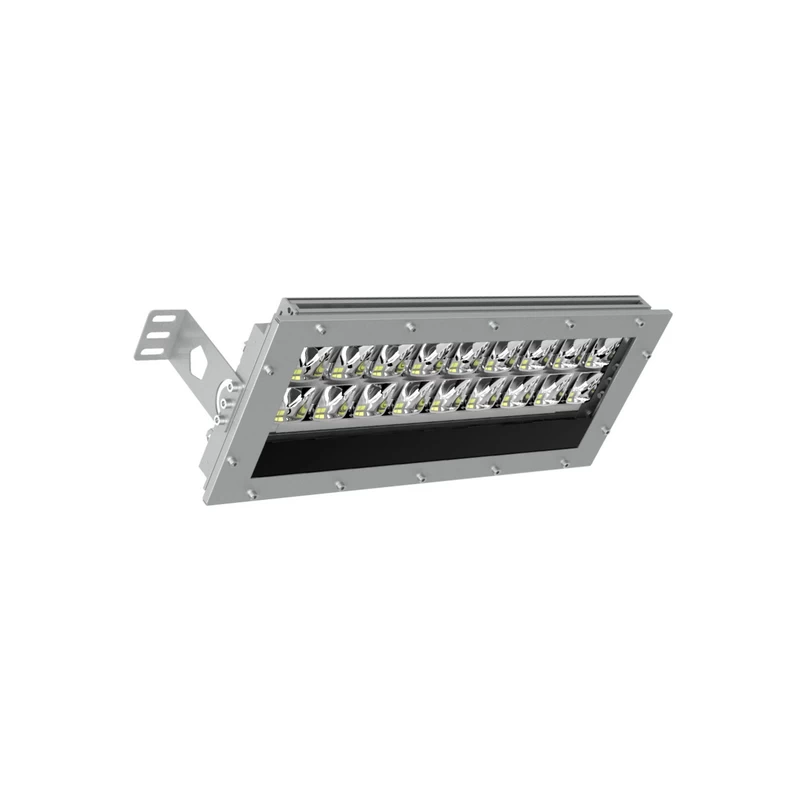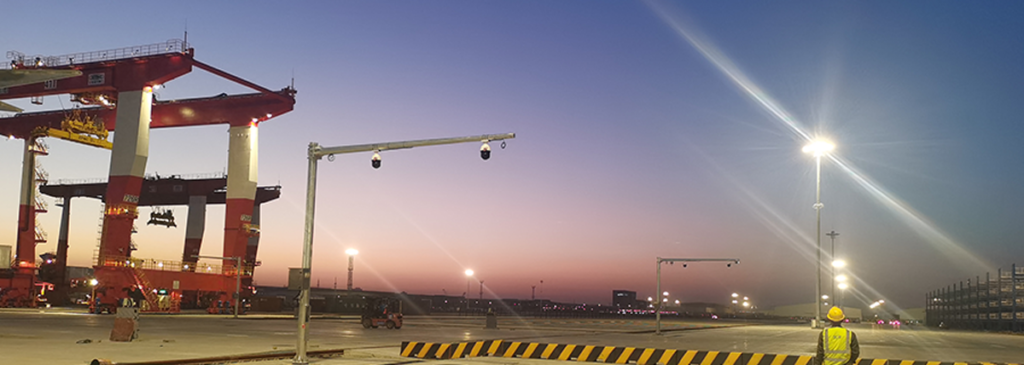목차
토글소개
화려한 조명 쇼와 완벽하게 동기화된 조명 효과가 어떻게 구현되는지 궁금한 적이 있나요? 그 해답은 바로 DMX(디지털 멀티플렉스 신호) 조명 제어에 있습니다. 하지만 DMX란 정확히 무엇일까요?
- DMX는 조명을 제어하는 방식에 혁신을 가져온 표준화된 프로토콜입니다.
- 일반적으로 무대 조명, 건축 조명 쇼, 공연 조명 연동 등에 사용됩니다.
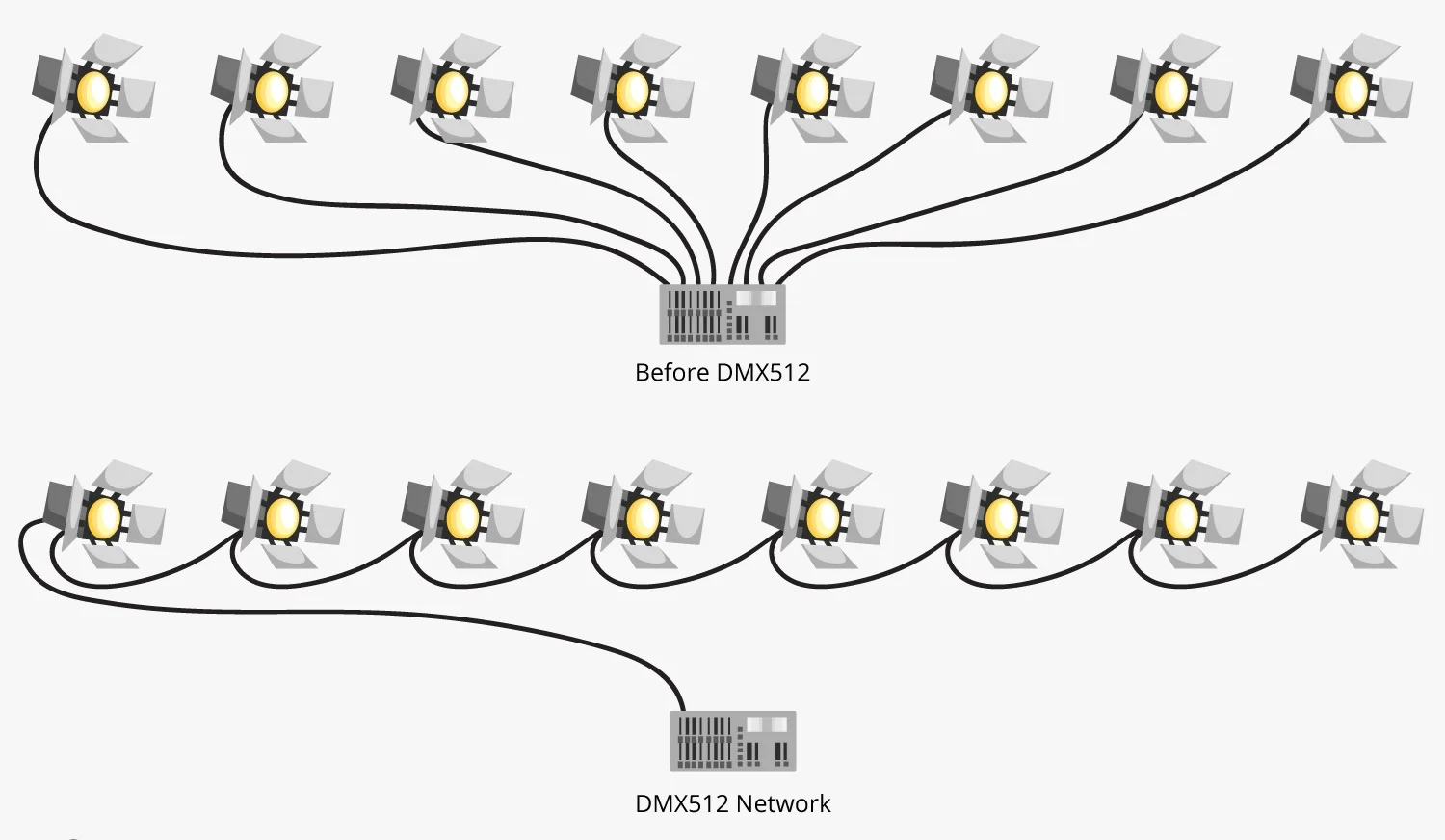
DMX의 정의
DMX는 DMX512의 약자로, 무대 조명, 건축 조명, 특수 효과 제어에 사용되는 디지털 통신 프로토콜입니다(DMX512(Digital Multiplex 512)). 무대 조명 콘솔과 조명 기구 간의 통신을 표준화하여 정밀하고 창의적인 조명 설계를 가능하게 합니다.
- DMX는 여러 '채널'(디바이스)을 동시에 명령할 수 있는 마스터 리모컨과 같습니다.
- "512"는 단일 DMX 신호가 512개의 채널을 동시에 제어할 수 있음을 나타냅니다.
DMX 조명이란 무엇인가요?
DMX의 핵심은 여러 조명 파라미터를 제어할 수 있는 디지털 통신 시스템입니다. 그렇다면 이것이 여러분에게 어떤 의미일까요? 조명의 색상, 강도, 패턴을 쉽게 사용자 지정하고 조정할 수 있다는 뜻입니다.
DMX 채널은 이 시스템의 핵심 요소입니다. 각 채널은 색상(RGB 조명의 경우 빨강, 녹색, 파랑), 디밍 레벨 또는 스트로브 효과와 같은 조명의 특정 속성을 나타냅니다. 이러한 채널을 조작하여 방대한 조명 시나리오를 만들 수 있습니다.
예를 들어 RGB 투광 조명을 사용하면 빨간색, 녹색, 파란색 채널에 할당된 값의 다양한 조합을 통해 수많은 색상을 만들 수 있습니다. 또한 색상에만 국한되지 않고 DMX는 변화의 속도와 순서를 제어하여 역동적이고 매력적인 조명 디스플레이를 제공합니다.
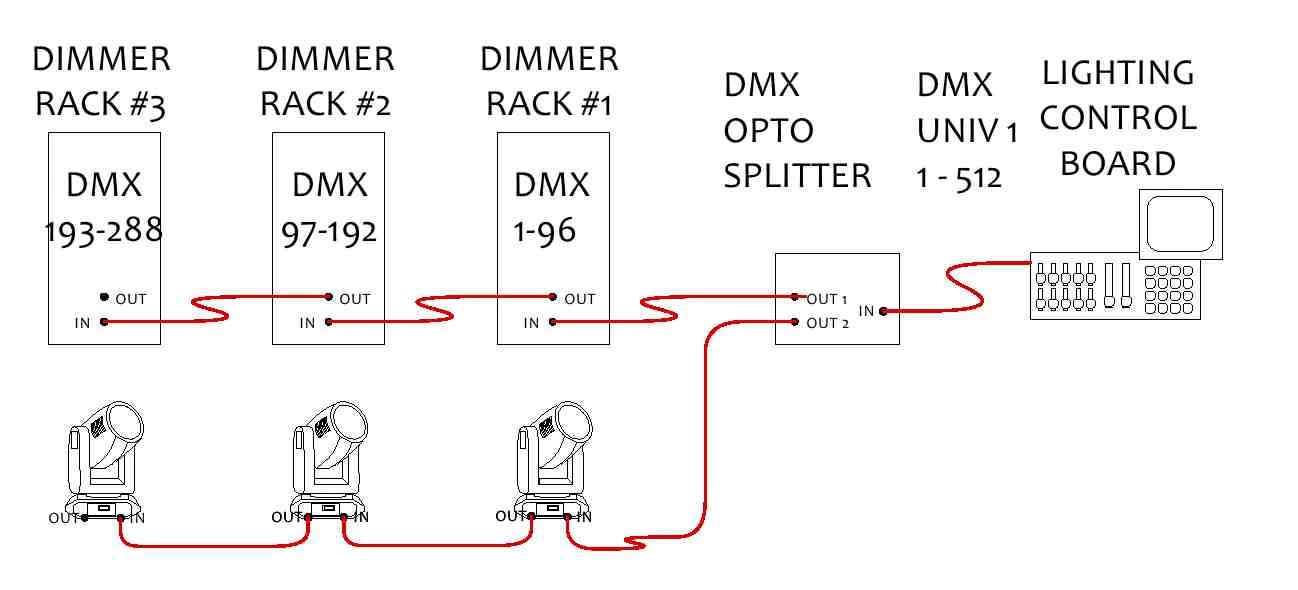
DMX 제어 파라미터
DMX 제어를 구현하려면 몇 가지 필수 구성 요소가 필요합니다. 가장 먼저 DMX 컨트롤러가 필요합니다. 이 컨트롤러는 조명이 무엇을 해야 하는지 알려주는 디지털 신호를 보내는 작동의 두뇌 역할을 합니다.
LED 조명이든 기존 조명이든 DMX 제어 조명은 이러한 신호를 수신하고 이에 응답하도록 설계되었습니다. 이러한 조명에는 DMX 데이터를 해석하고 그에 따라 성능을 조정하는 회로가 내장되어 있습니다.
또 다른 중요한 측면은 컨트롤러와 조명을 연결하는 케이블입니다. 고품질 케이블은 DMX 신호를 안정적이고 간섭 없이 전송하여 조명 성능의 결함이나 오류를 방지합니다.
| 매개변수 | 설명 | 예제 값 |
|---|---|---|
| 채널 수 | 색상이나 밝기처럼 DMX 시스템에서 제어할 수 있는 독립적인 파라미터의 개수입니다. | 일반적으로 512 |
| 데이터 새로 고침 빈도 | 컨트롤러가 신호를 업데이트하고 전송하는 빈도로 조명 변경의 부드러움에 영향을 줍니다. | 초당 약 20~40회 |
| 전송 거리 | DMX 신호를 효과적으로 전송할 수 있는 최대 거리입니다. | 신호 증폭기 없이 약 300미터 |
| 전송 속도 | DMX 프로토콜의 고정 데이터 전송 속도입니다. | 250 kbps |
| 신호 형식 | DMX 통신에 사용되는 전기 표준입니다. | RS-485 |
| 커넥터 유형 | DMX 장치에 일반적으로 사용되는 물리적 커넥터입니다. | 3핀 또는 5핀 XLR |
DMX 조명 제어의 이점
DMX 조명의 장점은 다양합니다. 가장 중요한 장점 중 하나는 높은 수준의 정밀도와 유연성을 제공한다는 점입니다. 기존 제어 방식으로는 불가능하거나 매우 어려웠던 복잡하고 독특한 조명 효과를 만들 수 있습니다.
에너지 효율은 또 다른 장점입니다. DMX를 사용하면 조명 출력의 강도와 지속 시간을 정밀하게 제어할 수 있어 불필요한 전력 소비를 줄이고 전기 요금을 절약할 수 있습니다.
또한 DMX를 사용하면 중앙 집중식 제어가 가능하므로 한 곳에서 여러 조명을 관리할 수 있습니다. 이는 무대, 이벤트 또는 건축 조명 프로젝트와 같은 대규모 설치에 특히 유용합니다.
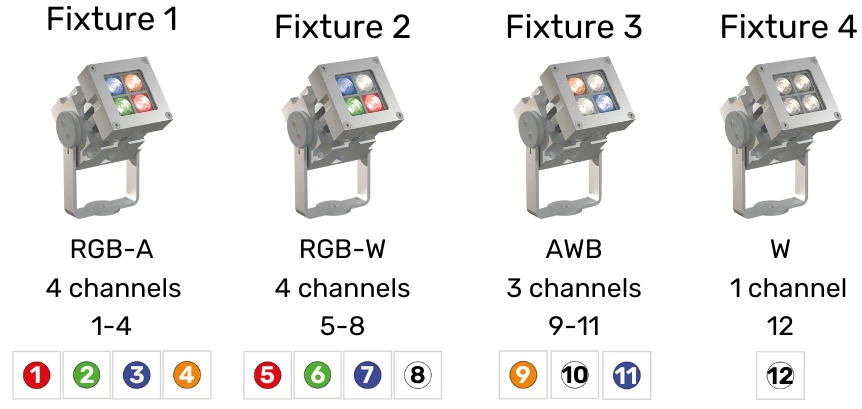
다양한 유형의 DMX 조명
DMX 조명은 실제로 DMX 제어 인터페이스가 있는 램프입니다. 콘솔이나 소프트웨어를 통해 DMX 신호를 수신하여 밝기, 색상 및 기타 효과를 조정할 수 있습니다. 일반적인 유형의 DMX 램프는 주로 다음과 같은 카테고리로 나뉩니다:
- 움직이는 헤드라이트
- LED PAR 캔
- LED 바 / 스트립 조명
- 벽면 와셔 조명
- 스트로브 조명
- 스팟 조명 팔로우
- 픽셀/매트릭스 조명
- 효과 조명
| 유형 | 특징 | 애플리케이션 |
|---|---|---|
| 움직이는 머리 | 팬/틸트, 줌, 고보 | 콘서트, 극장, 클럽 |
| LED PAR | RGB/RGBW, 컴팩트 | 무대 워시, 배경 |
| LED 바 | 선형, 픽셀 제어 | 무대 효과, 벽면 세척 |
| 벽 와셔 | 넓은 빔, 균일한 색상 | 건물, 무대 배경 |
| 스트로브 | 빠른 플래시, 디밍 | 클럽, 콘서트 |
| 스팟 팔로우 | 수동 추적, 강력한 빔 | 극장, 이벤트 |
| 픽셀/매트릭스 | 개별 픽셀 제어 | 시각 효과, LED 스크린 |
| 효과 조명 | 레이저, 연기, 화염 | 무대 공연, 클럽 |
DMX 조명 문제 해결 및 솔루션
대부분의 DMX 조명 결함은 배선, 주소 코드 및 단자 저항과 관련이 있습니다. 다음은 일반적인 결함입니다:
- 조명이 제어되지 않습니다: 주소 코드가 잘못 설정됨 / 신호가 수신되지 않음
해결 방법: 조명의 DMX 주소가 컨트롤러의 설정과 일치하는지 확인하고 DMX 케이블이 올바르게 연결되어 있는지 확인합니다. - 일부 조명에 신호가 없습니다: 신호 케이블이 느슨하거나 커넥터가 제대로 접촉되지 않습니다.
해결 방법: DMX 커넥터를 다시 장착하여 단단히 연결되었는지 확인하고 다른 DMX 케이블로 테스트해 보세요. - 조명기구가 무작위로 깜빡입니다: 단자에 종단 저항이 추가되지 않았거나 저품질 DMX 케이블이 사용 중입니다.
해결 방법: 마지막 픽스처의 DMX OUT 포트에 120Ω 종단 저항을 추가하고, 전문가용 DMX 케이블을 사용하세요. - 전송 거리가 너무 깁니다: 신호가 300미터 이상 약해집니다.
솔루션: DMX 신호 증폭기를 설치하여 단일 세그먼트 거리를 최소화합니다.
DMX 조명 제어의 미래 트렌드
LED가 주류 광원이 되었습니다:
- 높은 에너지 효율과 긴 수명: 정밀한 제어가 필요한 DMX 시스템에 이상적입니다.
- 강력한 색상 제어 기능: LED를 어둡게 조절하고 RGB 또는 RGBW 컬러 믹싱을 사용하여 다양한 색상을 연출할 수 있습니다.
- 모듈화: LED를 작은 모듈로 만들 수 있어 DMX 제어를 통해 복잡한 조명 효과를 더 쉽게 만들 수 있습니다.
더욱 스마트한 DMX 제어:
- Art-Net 및 sACN 네트워크 프로토콜: DMX를 사용하면 더 많은 조명 기기가 네트워크를 통해 신호를 전송할 수 있어 원격 제어가 가능합니다.
- 무선 DMX: 무선 DMX는 배선 복잡성을 줄이고 유연성을 높입니다.
- 지능형 제어: 앞으로는 앱, 터치스크린 또는 AI 알고리즘을 통해 조명 효과를 제어할 수 있게 됩니다.
더 많은 애플리케이션 시나리오:
- 공연 및 무대 조명: LED 무대 조명, 파 조명, 픽셀 조명 등을 DMX를 통해 정밀하게 제어할 수 있습니다.
- 건축 및 조경 조명: 대형 LED 월 와셔, 선형 조명, 픽셀 조명은 일반적으로 DMX를 통해 제어됩니다.
- 상업 및 소매 공간: LED 디밍 및 색상 변경과 DMX 제어가 결합된 기능입니다.
결론 DMX란?
DMX는 제어 신호를 통해 램프의 밝기, 색상, 각도를 조정하는 디지털 통신 프로토콜로, 조명의 변화를 동기화하여 무대 공연의 조명 효과를 더욱 흥미진진하게 만들어 줍니다.
사람들이 자주 묻는 질문
DMX 프로토콜이란 무엇인가요?
DMX 프로토콜은 DMX 컨트롤러가 조명 기구를 제어하는 데 사용하는 디지털 통신 표준입니다. 컨트롤러가 신호를 보내면 조명 기구가 이를 수신하여 실행합니다.
예를 들어 조명의 밝기, 색상, 위치 및 특수 효과를 제어할 수 있습니다.
DMX는 조명을 어떻게 제어하나요?
- DMX 컨트롤러는 디지털 신호를 전송합니다.
- 신호는 DMX 케이블(RS-485) 또는 무선 DMX를 통해 전송됩니다.
- 조명기구는 자체 신호를 수신합니다.
- 조명은 신호에 따라 해당 제어 동작을 수행합니다.
DMX로 조명을 무선으로 제어할 수 있나요?
DMX는 무선 조명 제어 시스템으로, 일반적으로 무선 DMX라고도 합니다. 신호는 전파를 통해 전송되므로 설치가 보다 유연하고 유지 관리 및 확장이 용이합니다.




